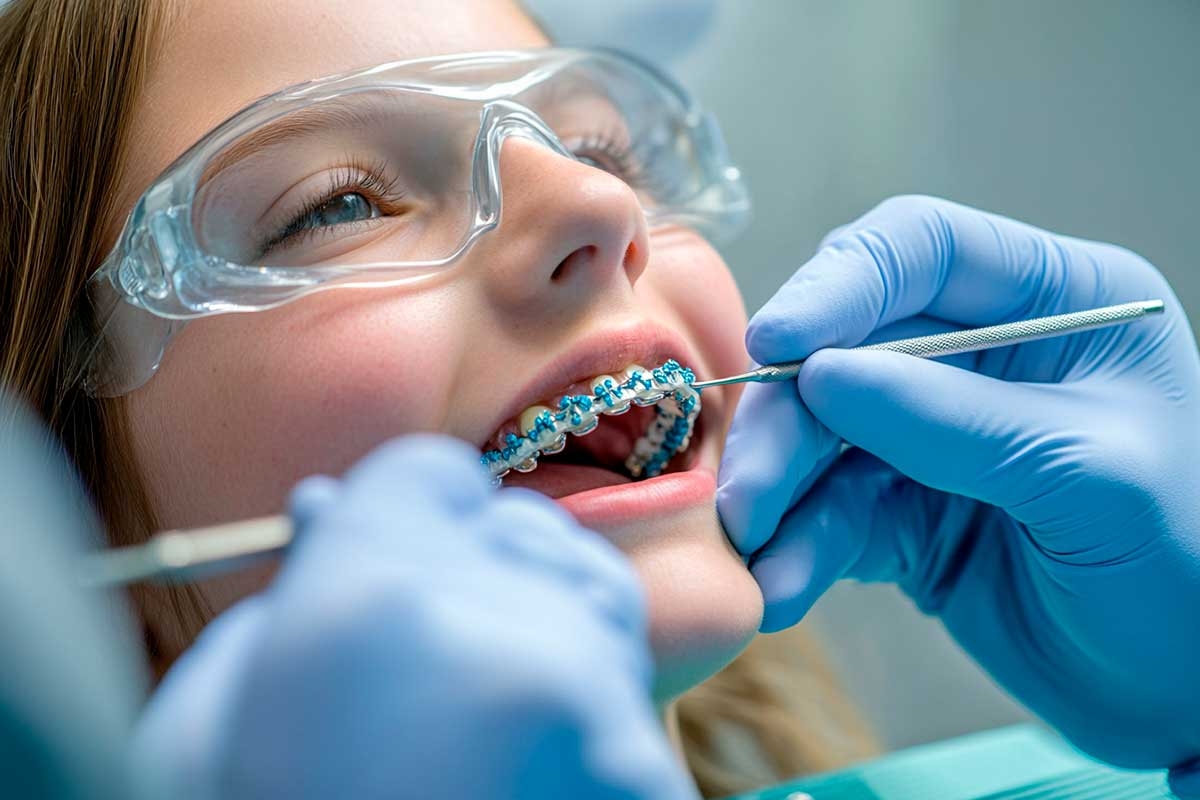
Orthodontist
Watch our video about Orthodontist
An orthodontist is a dental specialist focused on diagnosing, preventing, and treating irregularities in teeth alignment and jaw positioning. Their primary role is to correct misaligned teeth and bites to improve both function and aesthetics.
Using braces, aligners, and other orthodontic appliances, orthodontists help straighten teeth, close gaps, and align the jaw to promote better oral health and a confident smile. Orthodontic treatment is beneficial for both children and adults, enhancing overall dental function, facial symmetry, and chewing ability.
What Conditions Does an Orthodontist Treat?
Orthodontists specialize in treating various dental and jaw alignment issues, including:
- Malocclusion (Bad Bite) – Misalignment between the upper and lower teeth when biting.
- Crowded Teeth – Insufficient space in the jaw causing teeth to overlap.
- Spacing Issues – Large gaps between teeth that may affect bite function.
- Overbite – Upper front teeth significantly overlap lower teeth.
- Underbite – Lower teeth extend past the upper front teeth.
- Open Bite – Front teeth do not touch when the mouth is closed.
- Crossbite – Misalignment where some upper teeth sit inside the lower teeth.
Addressing these issues early can prevent speech difficulties, chewing problems, and long-term dental damage.
How Can an Orthodontist Help?
An orthodontist plays a crucial role in improving dental function, aesthetics, and overall health through:
- Braces and Aligners: Traditional metal braces or clear aligners help straighten teeth.
- Palatal Expanders: Used to widen the upper jaw in children for proper teeth alignment.
- Retainers: Helps maintain teeth positioning after orthodontic treatment.
- Jaw Correction Treatments: Procedures for jaw misalignment issues.
- Early Orthodontic Evaluation: Identifies bite and alignment problems in children.
- Speech and Chewing Improvement: Enhances oral function by correcting bite issues.
- Preventative Orthodontics: Guides proper teeth growth and alignment to avoid future complications.
Orthodontic treatment not only enhances the appearance of teeth but also prevents oral health problems such as cavities, gum disease, and jaw pain.
What Tests Does an Orthodontist Request?
An orthodontist may conduct several diagnostic tests to assess dental alignment and jaw function, including:
- Panoramic X-Rays – Full-mouth imaging to evaluate tooth and jaw positioning.
- Cephalometric X-Rays – Assesses the relationship between teeth, jaw, and facial structure.
- 3D Scanning & Digital Impressions – Creates accurate models for braces or aligners.
- Bite Analysis – Examines how upper and lower teeth align during biting.
- Photographic Analysis – Captures images to track progress in orthodontic treatment.
- TMJ (Temporomandibular Joint) Evaluation – Identifies jaw joint disorders.
- Tooth Eruption Monitoring – Checks if children’s teeth are emerging correctly.
These tests allow orthodontists to develop a personalized treatment plan tailored to each patient’s needs.
When to See an Orthodontist?
Seeing an orthodontist is essential in the following situations:
- Crooked or Misaligned Teeth – If your teeth are not straight, orthodontic treatment can help align them properly.
- Bite Problems (Overbite, Underbite, Crossbite, Open Bite) – If your bite is not correctly aligned, it may cause difficulty chewing or speaking.
- Jaw Pain or Clicking Sounds – Pain or discomfort in the jaw, especially while eating or speaking, may indicate alignment issues.
- Difficulty Chewing or Biting – If you struggle to chew food properly, it may be due to a bite misalignment.
- Speech Problems Due to Tooth Positioning – Misaligned teeth can affect pronunciation and clarity in speech.
- Gaps or Crowded Teeth – Large spaces or overlapping teeth can impact oral health and aesthetics.
- Children’s Early Orthodontic Evaluation – Kids as young as 7 years old should have their teeth checked for potential orthodontic issues.
Early orthodontic intervention can reduce the need for extensive treatments in the future and promote better dental function.
How to Prevent Orthodontic Issues?
While some orthodontic issues are genetic, several habits and preventive measures can help:
- Encouraging early orthodontic evaluation for children to detect problems early.
- Avoiding prolonged thumb-sucking and pacifier use beyond infancy.
- Maintaining proper oral hygiene to prevent gum disease and cavities.
- Using mouthguards for sports to prevent dental trauma.
- Addressing dental habits like teeth grinding or jaw clenching early.
- Ensuring a balanced diet rich in calcium for healthy teeth and jaw development.
- Regular dental check-ups to monitor tooth and jaw growth.
What to Ask an Orthodontist During the First Consultation?
During your first orthodontic visit, consider asking the following questions:
- Do I need braces or aligners, and what are my options?
- How long will my treatment take?
- What changes should I expect in my teeth and facial structure?
- Will my treatment affect my speech or eating habits?
- Are there any lifestyle adjustments needed during orthodontic treatment?
- How often should I visit for adjustments or check-ups?
- What will happen if I don’t get orthodontic treatment now?
Schedule a Consultation with an Orthodontist at Clinic Consultation
At Clinic Consultation, we provide expert orthodontic care for children, teens, and adults. Whether you need braces, aligners, or jaw correction treatments, our team offers personalized solutions for a healthier and more confident smile.
📅 Book your orthodontic consultation today and take the first step toward perfectly aligned teeth!
Click here to schedule an appointment online